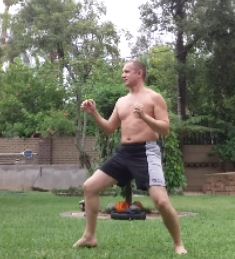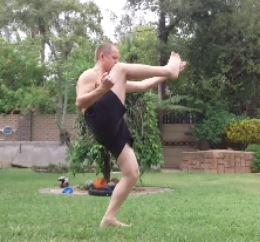Roundhouse and Reverse Roundhouse kicks
It started with a brief conversation on Facebook with Sensei Jesse Enkamp. He seems like the guy who has the answers to those questions that you wanted to ask your Sensei, but never got the courage- or- who had the answers where your Sensei hadn't. In summary- Jesse's knowledge of karate seems to be surpassed only by his passion for it.
So- my question to him was: "Why do I not see any katas with roundhouse kicks, reverse roundhouse kicks and back kicks, yet these kicks are all accepted as part of every style's kihon."
His answer was: "Mikazuki Geri = Mawashi Geri. We have a kata that features a back kick. Reverse roundhouse kicks are useless for self defence. :D"
Great answer, but as all answers do it had me having more questions. While the question of why somebody would invent a technique called "Dragon Whips its Tail" in kungfu if it was going to be regarded as useless by the people of the Ryukyu Islands one day was not foremost on my mind I did wonder why anyone would make a crescent kick more difficult by adding extra hip rotation and changing the point of impact.
So- I went and did these kicks and noticed a little flaw that crept in from time to time when I was practicing:
With my roundhouse kick, my foot tends to follow a more diagonally upward path than a circular path toward the side of my opponent's head. How did I fix this? The answer also explains the existence of the two different, but related kicks.
It is simple- I just stood a bit further from my target. That gave my hips room to stretch out towards the target and my mawashi geri ended up looking less like a mae geri.
This principle also finds application with the spinning kick, reverse roundhouse kick and reverse crescent kick.
So- my conclusion is that the one kind of kick is meant to reach its target over a longer distance than what is within the range of the other.
And that's it for this week's blog post! :)
Have a great week and train well.




















Comments
Post a Comment